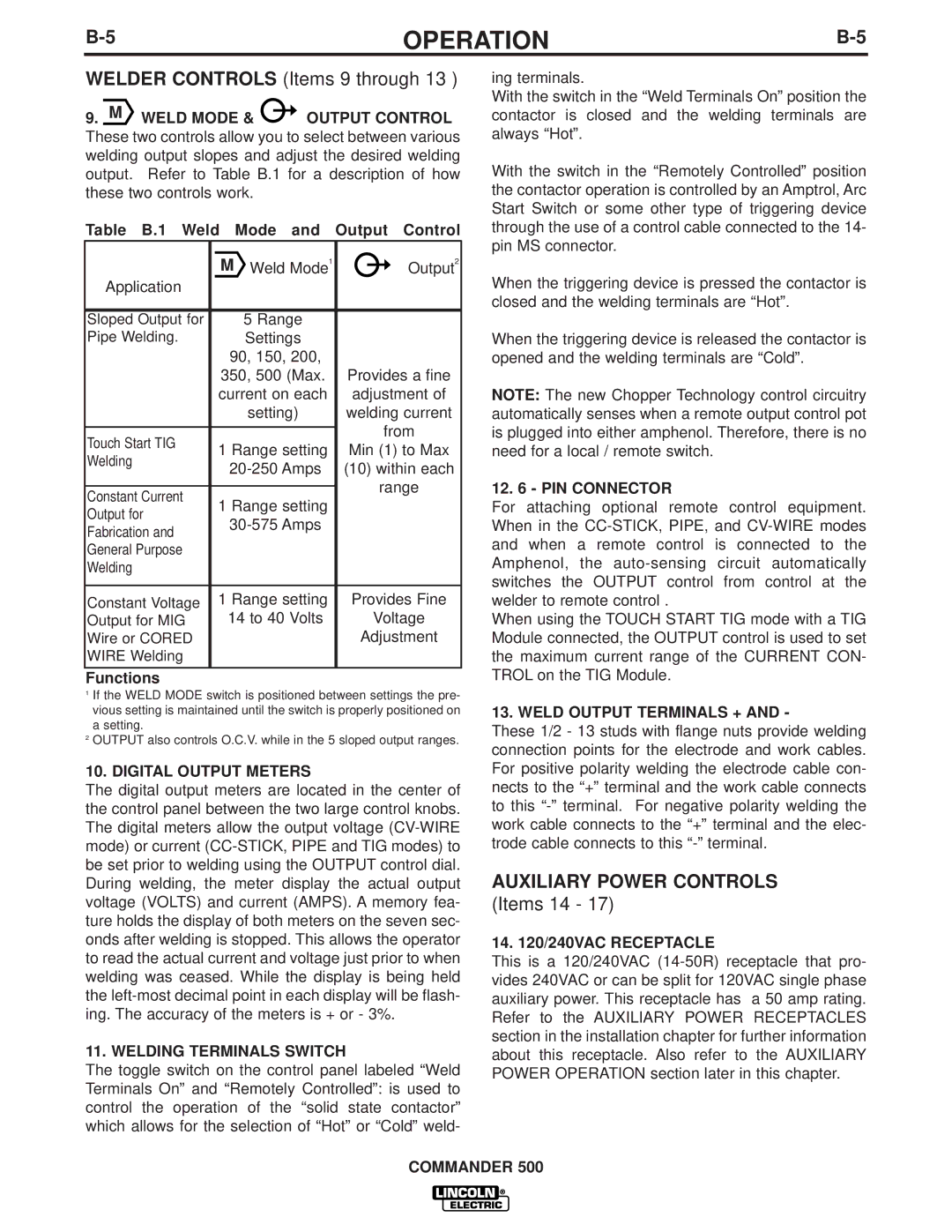500 specifications
The Lincoln Electric 500 is a hallmark of innovation in arc welding technology, designed to cater to the rigorous demands of both industrial applications and serious hobbyist projects. This powerful machine is known for its reliability, versatility, and user-friendly design, making it an essential tool for professional welders and those looking to tackle various welding tasks with ease.One of the standout features of the Lincoln Electric 500 is its robust power output. With a capability of up to 500 amps, it can handle a wide range of welding processes, including Stick, TIG, and MIG welding. This flexibility allows welders to use the machine for different types of metals, including steel, stainless steel, and aluminum, making it suitable for diverse applications from automotive to construction industries.
The machine's digital interface enhances user experience by providing precise control over the welding parameters. The intuitive display allows for easy adjustments of voltage and wire speed, ensuring optimal welding conditions are achieved. This feature is especially beneficial for beginners who may require additional support as they learn the intricacies of welding.
The Lincoln Electric 500 is also equipped with advanced technologies that enhance efficiency and welding quality. One such technology is the inverter system, which optimizes the power source for superior arc stability and improved penetration. This results in cleaner welds with minimal spatter, reducing the need for post-welding cleanup. Furthermore, the machine’s duty cycle is impressive, meaning it can operate for extended periods without overheating, a critical factor in high-production environments.
Another significant characteristic of the Lincoln Electric 500 is its portability. Weighing in at a manageable level and designed with built-in carrying handles, it’s easy to transport between job sites. This feature is particularly valuable for mobile welders who need to work in various locations.
Safety is paramount in welding operations, and the Lincoln Electric 500 integrates various safety features designed to protect the user. Overload protection and thermal overload indicators help prevent damage to the machine and injury to the operator, ensuring a reliable and safe working environment.
Overall, the Lincoln Electric 500 stands out not only for its performance but also for its thoughtful engineering that prioritizes user safety, comfort, and versatility. It is a dependable choice for anyone looking to produce high-quality welds while enjoying the benefits of advanced welding technology.

